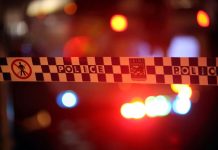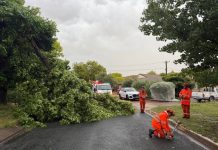There are two new COVID-19 exposure locations in the ACT after a Sydney man visited the Territory on Monday while potentially infectious.
Anyone who was at the following locations must immediately isolate, contact ACT Health, get tested for COVID-19 and complete an online declaration form:
- National Gallery of Australia (Botticelli to Van Gogh exhibition and exhibition gift shop) on Monday 14 June 12-1.45pm, or
- Via Dolce Pasticceria, Canberra City on Monday 14 June 2.45-3.15pm
Anyone who visited the National Gallery of Australia (including the main gift shop) from 12 to 2pm on the Monday must watch for symptoms of COVID-19, immediately get tested, and isolate until a negative test is received.
“It is a strong reminder that COVID-19 remains a risk,” said Chief Minister Andrew Barr. “This is not the first nor I suspect will it be the last time during the pandemic that there will be exposure sites and potential risk in the ACT.”
The man in his 40s from Sydney’s north-west returned test results showing low virus levels. NSW Health has not been able to rule out a possible case of COVID-19.
Dr Kerryn Coleman, the ACT Chief Health Officer, said the man tested positive on some markers, but negative on others.
“We’re not 100% sure that it is a case, but we can’t exclude the fact that it is. He’s certainly not infectious. … It may be an old infection or [the test] may be reacting to some other virus that he has in his system at the moment.”
NSW and ACT health experts had agreed that it was better to be “overly cautious than under respond”, Dr Coleman said.
ACT Health authorities began contact tracing this morning, using data from the Check In CBR app and other ticketing information to identify people who had been at the exposure locations.
Mr Barr said using the Check In CBR app was an important tool for helping contact tracers. “Canberrans have been using the app in great numbers, and we thank everyone for doing so.”
This was the first time the ACT Government had called on Check In CBR in response to a real case, Dr Coleman noted. Running training exercise scenarios meant they were well prepared. “It’s going very smoothly,” she said.
By 10am, 120 people had made declarations online, and more than 100 calls had been made to the contact tracing centre. Weston Creek Walk-in Centre had received 50 people more than normal.
Extra staff have been rostered on at existing ACT testing clinics. The ACT Government was monitoring whether they needed to set up an additional testing site or whether they could manage within their own sites by surging the workforce, Dr Coleman said.
ACT Health asked the public to check the ACT COVID-19 website regularly, as the list of exposure locations might be updated. For the list of ACT exposure sites and information on getting tested, visit covid19.act.gov.au
NSW recorded four new local cases of the virus yesterday, at new exposure locations in Sydney.
Pfizer for the over-fifties
Yesterday, the Australian Technical Advisory Group on Immunisation (ATAGI) raised the minimum age for the Astra-Zeneca vaccine from 50 to 60, due to the risk of rare but serious blood clotting. The Pfizer vaccine is preferred for people under 60.
Health experts advise that anyone who had a first dose of Astra-Zeneca should not hesitate to get a second, regardless of their age.
As the ACT Government updates its vaccine program, Mr Barr asked people in their fifties who had not yet booked a vaccine appointment to be patient over the next few days, and not to contact the COVID booking line. The government will let the community know when more appointments were available.
Almost 50,000 ACT citizens were in their fifties, Mr Barr said; 29,500 had yet to be vaccinated.
The Commonwealth has promised to deliver Pfizer vaccines to GPs. Dr Coleman will meet her federal counterparts today to learn how many vaccines Canberra doctors will receive, and how governments can make them more accessible for the public.
Pfizer with two shots, three to four weeks apart, meant more people could be fully vaccinated more quickly than with Astra-Zeneca vaccinations three months apart – “a counter-balance to issues on the supply side,” Mr Barr said.
However, vaccinations for people in their thirties will not be as early as expected, Dr Coleman said. “But I don’t think it’s going to be months and months and months. We have a really good capacity in our system that we’re looking at building.”








